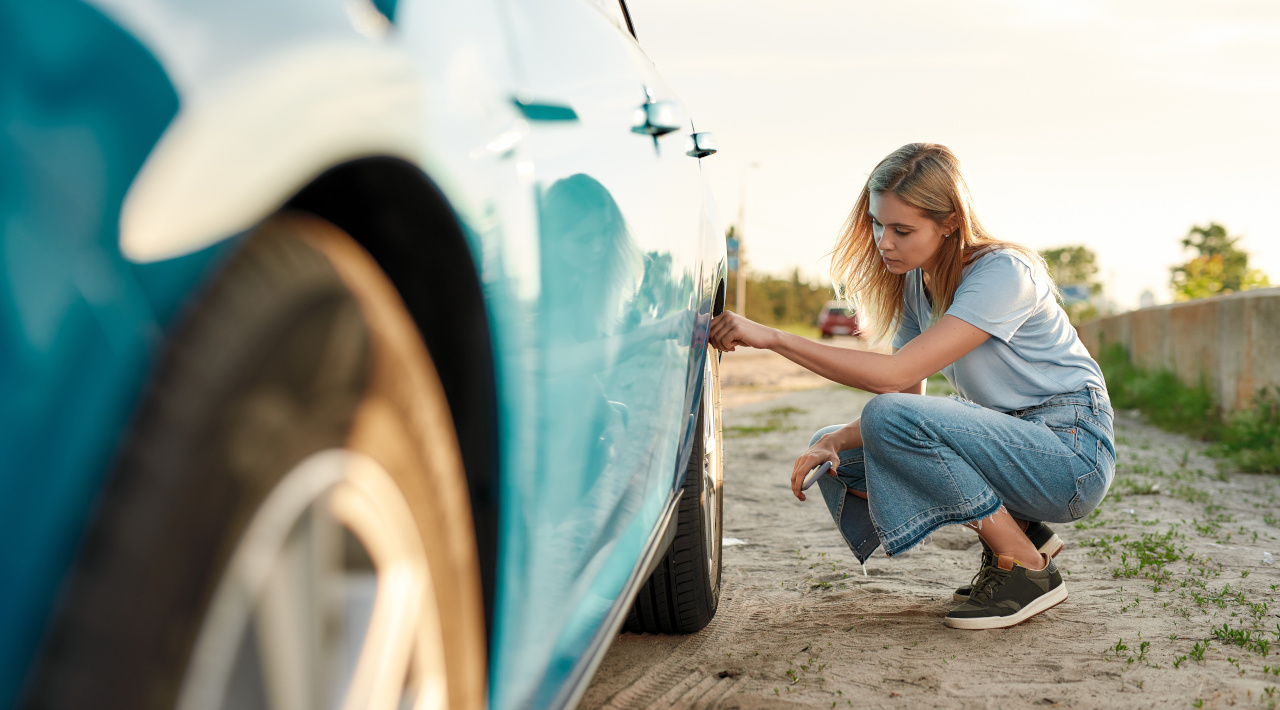There are three main advantages to making sure that your vehicle is operating with optimal tyre pressure - road safety, greater fuel efficiency and prolonged tyre lifespan. Tyres operating with optimal pressure improve vehicle steering, handling, and grip; tyres that are underinflated can increase stopping distances by up to eight metres and more in harsh weather conditions.

Keeping your tyres at the correct pressure helps distribute the weight of your vehicle evenly across the tread pattern of the tyre, keeping both the tyre itself and the vehicle at their most stable. When your tyres are either over or under inflated, they can lose stability, which may have a negative impact on handling, cornering and, most importantly, stopping. Tyres naturally lose some air over time, so it is important to check your tyre pressure regularly. The management systems of some vehicles will be set to remind you to do this on a regular basis or will detect if they need re-pressurising.
You will need to go to a fuel station to check your tyre pressure. Most have air pressure dispensers on their forecourts which you can use for a small fee.
Begin by determining what your tyre pressure should be. This will usually be shown either in the vehicle’s manual or on a sticker just inside the driver’s door. The pressure usually varies slightly between the front and back wheels. The optimal pressure may be shown in psi and bar readings, or it may be shown as a tyre pressure chart by size.
Remove the dust cap from your tyre valve and place the pressure gauge over the valve. Press down carefully to ensure an accurate reading. Check the reading on the machine and determine whether you need to deflate or inflate your tyres. If needed, adjust the figure on the machine to the desired pressure, making sure to check whether it is shown in psi or bar, and wait for the gauge to adjust. You will usually hear a beep when this operation has been completed. You can then move on to the other tyres.
For most standard road vehicles there is no need to adjust your tyre pressure. Conditions in which you may wish to consider adjusting your tyre pressure are when you are driving on sand, with a particularly heavy load or at extremely high speeds.
If this is the case, we recommend checking the vehicle’s manual for further information.
We recommend checking your tyre pressure every three months or if any variations are detected by your car’s electronic management system.
You will need to take your vehicle to a fuel station to check your tyre pressure with an air gauge. If you are uncomfortable doing this, most garages will check your tyre pressure for you, but may charge for this service.
If you do not check your tyre pressure regularly, you risk compromising the safety of your vehicle and the tyres. Not only this, but regularly checking your tyre pressure could also save you money.
Regularly checking your tyre pressure is a vital part of being a responsible driver, whether you own or lease your vehicle. However, if your vehicle lease agreement is with Leasys, you have the option of including a maintenance package that will cover servicing, maintenance, repairs, and tyres. For a small, fixed inflation-proof monthly payment added directly to your monthly rental, you will be free from the hassle of maintaining your vehicle or the unpredictability of budgeting for potential repairs. Contact Leasys today to tailor-make a leasing package for your next new car.